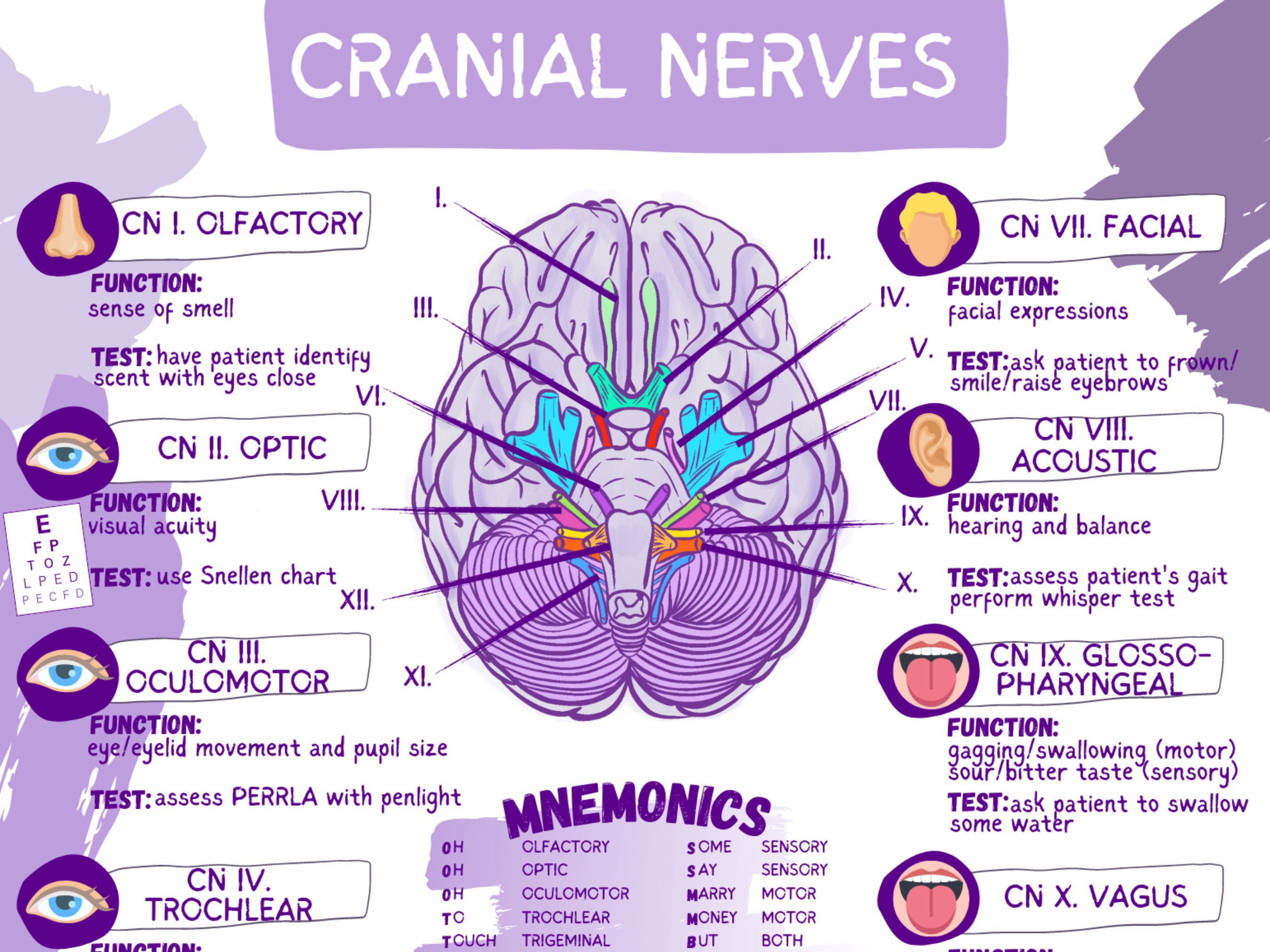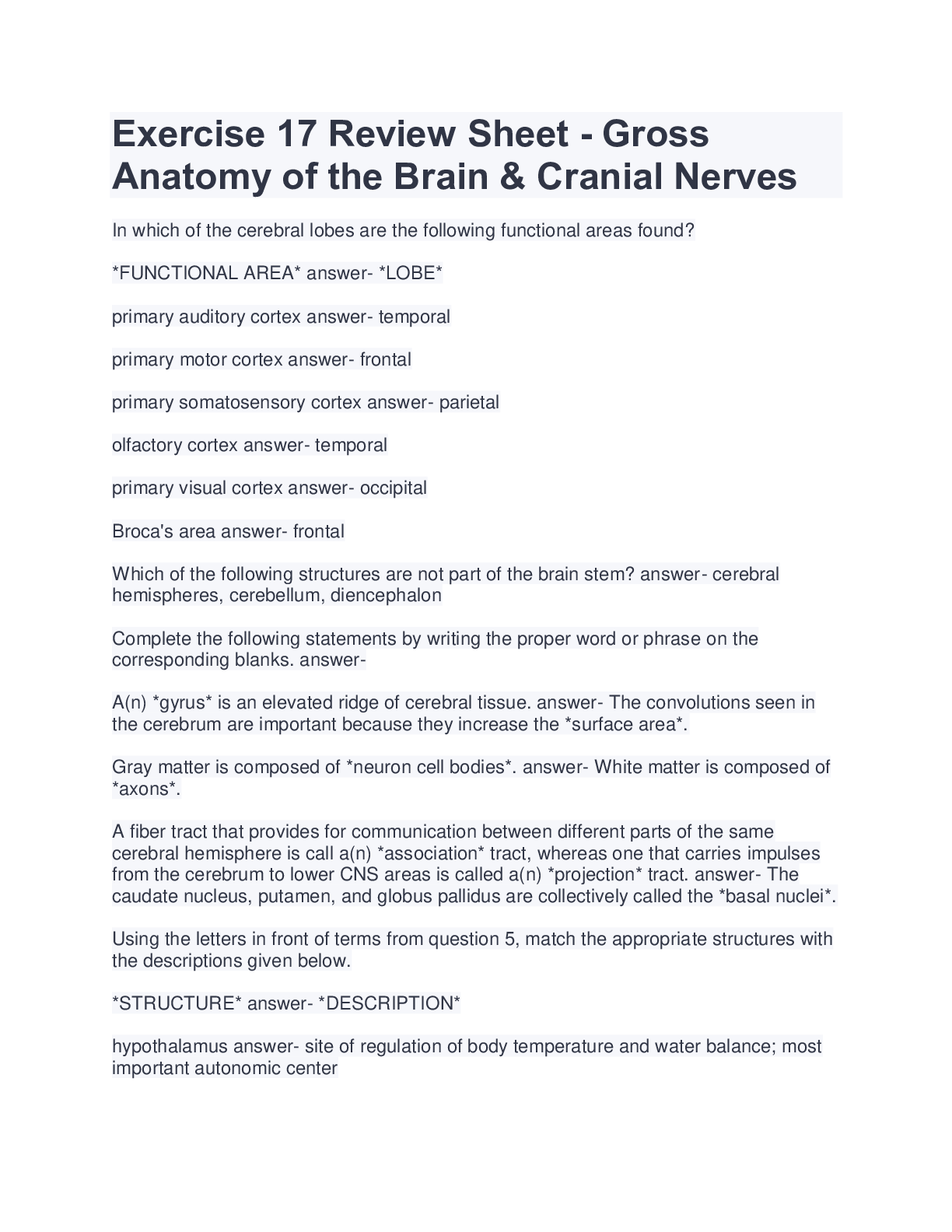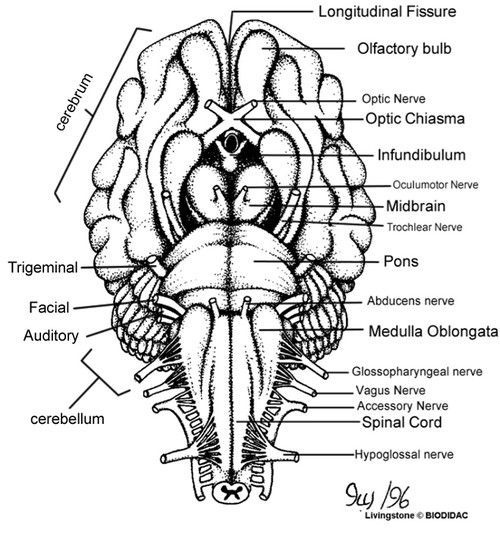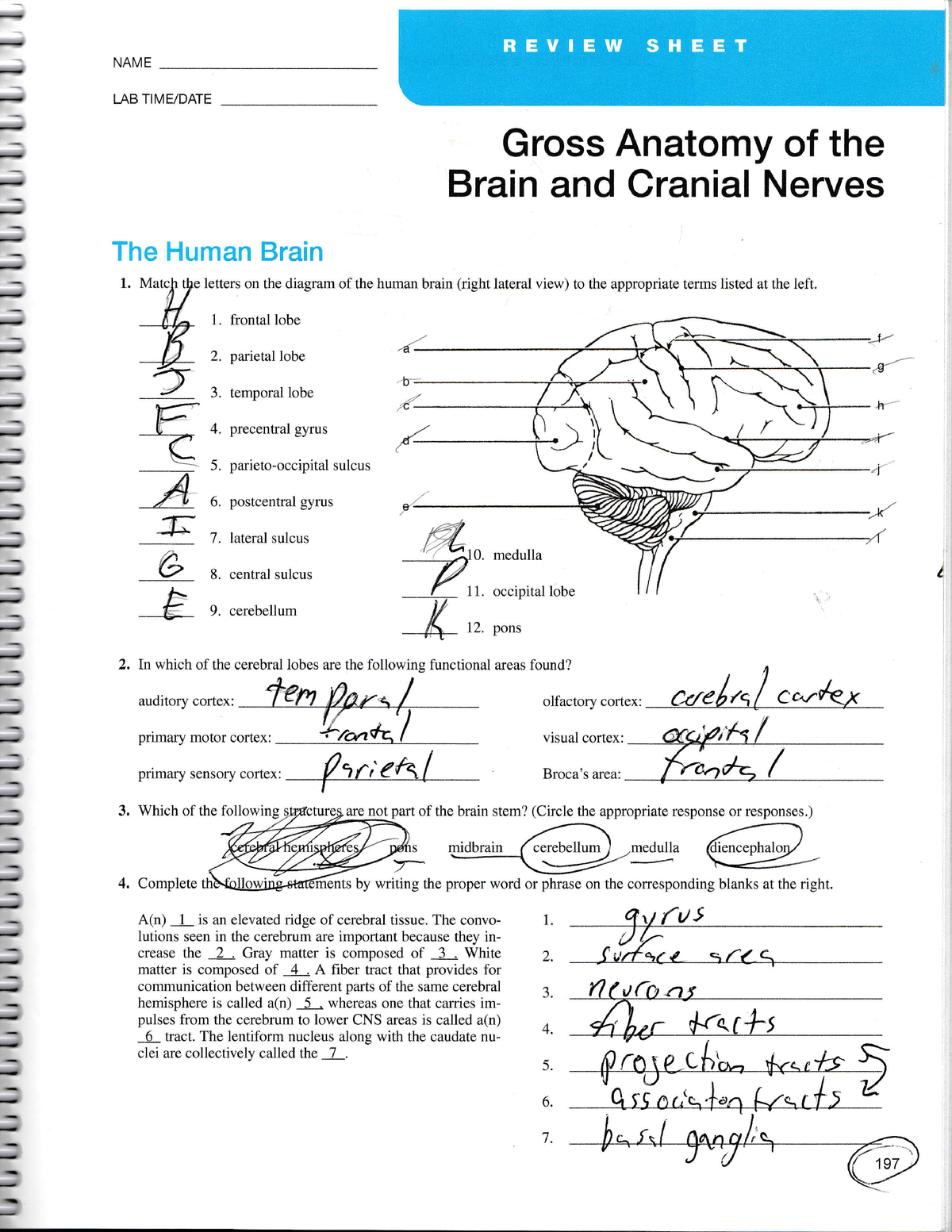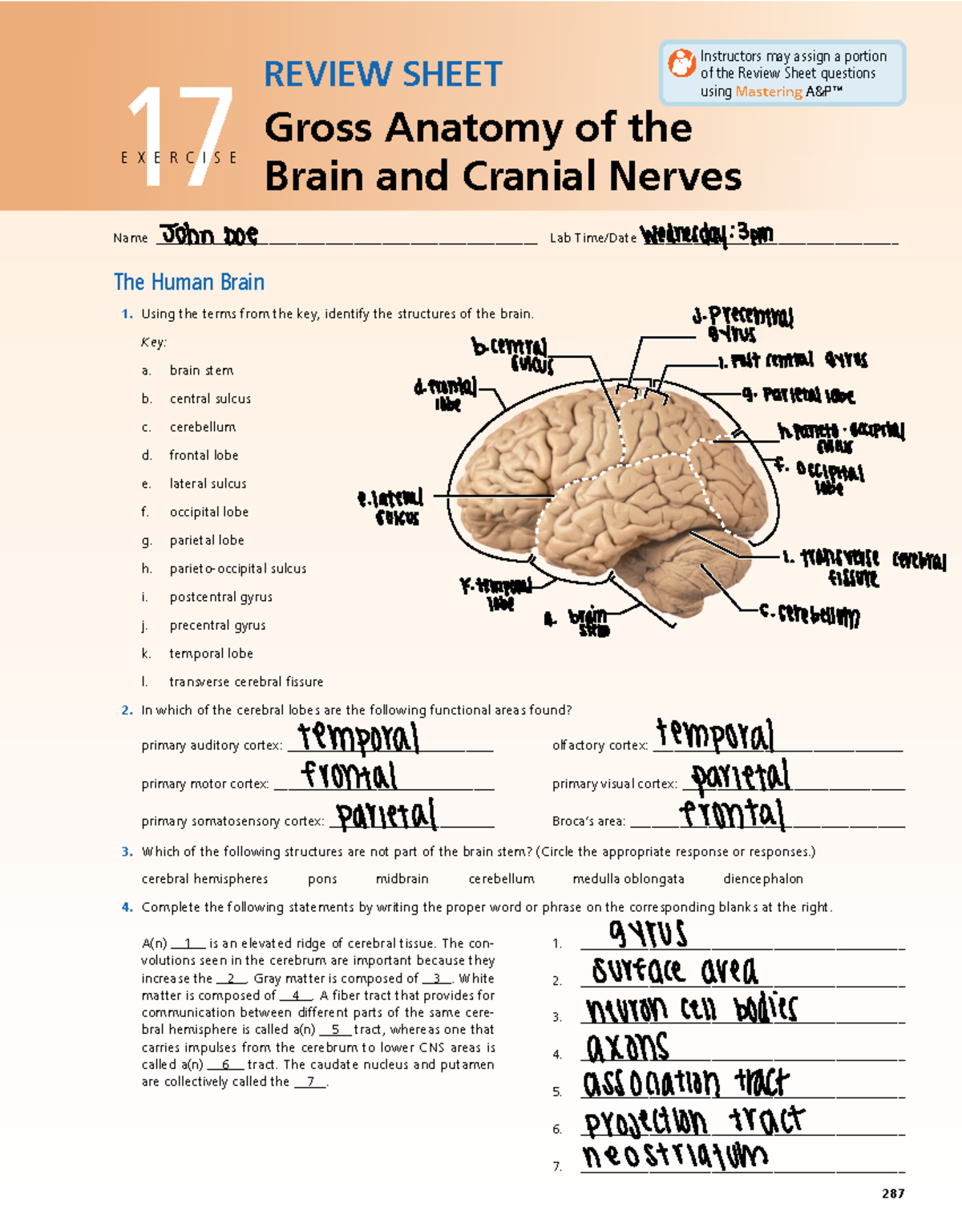Gross Anatomy Of The Brain And Cranial Nerves Review Sheet - A (n) gyrus is an elevated ridge of cerebral tissue. Groups of structures that develop from the embryonic brain are listed below. Designate the embryonic origin of each group. Important autonomic center of brain involved in the regulation of body temperature 2. Using choices from the key, provide the name and number of the cranial nerves involved in each of the following activities, sensations, or. The convolutions seen in the cerebrum are important because they increase the surface.
Important autonomic center of brain involved in the regulation of body temperature 2. The convolutions seen in the cerebrum are important because they increase the surface. Using choices from the key, provide the name and number of the cranial nerves involved in each of the following activities, sensations, or. Groups of structures that develop from the embryonic brain are listed below. A (n) gyrus is an elevated ridge of cerebral tissue. Designate the embryonic origin of each group.
Designate the embryonic origin of each group. Groups of structures that develop from the embryonic brain are listed below. Using choices from the key, provide the name and number of the cranial nerves involved in each of the following activities, sensations, or. A (n) gyrus is an elevated ridge of cerebral tissue. The convolutions seen in the cerebrum are important because they increase the surface. Important autonomic center of brain involved in the regulation of body temperature 2.
Gross Anatomy Of The Brain And Cranial Nerves Worksheet Anatomy
Important autonomic center of brain involved in the regulation of body temperature 2. The convolutions seen in the cerebrum are important because they increase the surface. A (n) gyrus is an elevated ridge of cerebral tissue. Groups of structures that develop from the embryonic brain are listed below. Using choices from the key, provide the name and number of the.
Anatomy Of The Cranial Nerves Types Location And Its Functions Bilarasa
The convolutions seen in the cerebrum are important because they increase the surface. A (n) gyrus is an elevated ridge of cerebral tissue. Using choices from the key, provide the name and number of the cranial nerves involved in each of the following activities, sensations, or. Groups of structures that develop from the embryonic brain are listed below. Important autonomic.
Exercise 17 Review Sheet Gross Anatomy of the Brain & Cranial Nerves
The convolutions seen in the cerebrum are important because they increase the surface. Using choices from the key, provide the name and number of the cranial nerves involved in each of the following activities, sensations, or. Groups of structures that develop from the embryonic brain are listed below. Designate the embryonic origin of each group. Important autonomic center of brain.
Gross Anatomy Of The Brain And Cranial Nerves Worksheet Anatomy
Designate the embryonic origin of each group. The convolutions seen in the cerebrum are important because they increase the surface. Groups of structures that develop from the embryonic brain are listed below. Using choices from the key, provide the name and number of the cranial nerves involved in each of the following activities, sensations, or. Important autonomic center of brain.
Gross Anatomy Of The Brain And Cranial Nerves Worksheet Answers
Groups of structures that develop from the embryonic brain are listed below. The convolutions seen in the cerebrum are important because they increase the surface. Designate the embryonic origin of each group. A (n) gyrus is an elevated ridge of cerebral tissue. Using choices from the key, provide the name and number of the cranial nerves involved in each of.
Week 4 Lab Work pages1 287287 REVIEW SHEET Gross Anatomy of the 17
Important autonomic center of brain involved in the regulation of body temperature 2. A (n) gyrus is an elevated ridge of cerebral tissue. Designate the embryonic origin of each group. Groups of structures that develop from the embryonic brain are listed below. Using choices from the key, provide the name and number of the cranial nerves involved in each of.
Activity 2 (Gross Anatomy of the Brain and Cranial Nerves) MT13
Groups of structures that develop from the embryonic brain are listed below. A (n) gyrus is an elevated ridge of cerebral tissue. Using choices from the key, provide the name and number of the cranial nerves involved in each of the following activities, sensations, or. The convolutions seen in the cerebrum are important because they increase the surface. Important autonomic.
Gross Anatomy Of The Brain And Cranial Nerves
Using choices from the key, provide the name and number of the cranial nerves involved in each of the following activities, sensations, or. Important autonomic center of brain involved in the regulation of body temperature 2. Designate the embryonic origin of each group. The convolutions seen in the cerebrum are important because they increase the surface. A (n) gyrus is.
Review Sheet Exercise 17 Diagram Quizlet
Using choices from the key, provide the name and number of the cranial nerves involved in each of the following activities, sensations, or. Designate the embryonic origin of each group. Important autonomic center of brain involved in the regulation of body temperature 2. The convolutions seen in the cerebrum are important because they increase the surface. A (n) gyrus is.
Review Sheet Exercise 14 Gross Anatomy Of The Brain And Cranial Nerves
Groups of structures that develop from the embryonic brain are listed below. Designate the embryonic origin of each group. A (n) gyrus is an elevated ridge of cerebral tissue. Using choices from the key, provide the name and number of the cranial nerves involved in each of the following activities, sensations, or. The convolutions seen in the cerebrum are important.
Groups Of Structures That Develop From The Embryonic Brain Are Listed Below.
A (n) gyrus is an elevated ridge of cerebral tissue. The convolutions seen in the cerebrum are important because they increase the surface. Designate the embryonic origin of each group. Using choices from the key, provide the name and number of the cranial nerves involved in each of the following activities, sensations, or.

